Common watercolor mistakes beginners make
What makes watercolor so hard to paint with? OK, that’s a trick question. Because although watercolors have a reputation of being difficult to master, they can actually be REALLY easy to paint with. However, there are a few common watercolor mistakes beginners make. Once you know what those pitfalls are and how to avoid them, painting watercolor can be a breeze.
Unfortunately, it’s often the case that when someone tries watercolor painting for the first time, they don’t get on with it and decide it’s not the medium for them.
The paints get demoted to the back of a cupboard and the artist gives up on painting with watercolor, or maybe even making art altogether.
I really hope this hasn’t happened to you.
Making these common watercolor mistakes can massively knock your confidence and leave you doubting your ability. Especially if you’re trying to learn watercolor at home by yourself, without any instruction.
So if you’ve ever struggled with watercolor before, or you’re exploring it for the first time now, make sure you’re familiar with these 5 common watercolor mistakes so you can avoid them.
The 5 most common watercolor mistakes:
If your watercolors haven’t seen the light of day for a while, I hope this mini class has given you the encouragement and advice you need so you can get them out and try again.
Helpful resources for watercolor success
If you’re buying watercolor supplies or gathering what you can from what you have to hand, you’ll find advice here on what’s best to use.
If you haven’t tried them yet, check out the free class taster selection where you can learn my watercolor method for free through step-by-step video classes.
And if you want to learn more about how to adopt a ‘growth mindset’ so you can reframe your thinking to focus on the process rather than the results, check out this post which includes a great TED talk.
Have you made these common watercolor mistakes?
Have any of these mistakes happened to you? Did they knock your confidence, or maybe stop you from continuing? Are you feeling inspired to try again now you know how to avoid these mistakes?
I’d really love to hear from you. Please leave a comment below so we can have a conversation.
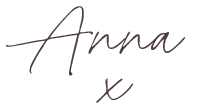
If you’re learning to paint in watercolor and your paintings aren’t looking as realistic as you’d hoped.
It’s probably for one of these five reasons.
Hi, it’s Anna Mason.
In this episode of Nature Studio TV.
I’m gonna run through the five mistakes most commonly made by beginners to watercolor who are seeking realism in their paintings, stepping outside of our comfort zone to learn something new can feel vulnerable.
And if our results don’t meet our expectations, it can be tempting to assume we won’t be good at this.
But if your watercolor paintings aren’t looking as realistic as you’d like just yet, it’s most likely for one of these five reasons, the water color supplies you’re using, make a huge difference to the results you’re able to achieve.
So if you’re using poor quality supplies, you’re at a disadvantage before you even begin painting, you can find a link on this page to the supplies I recommend and why.
But the most important one to tell you about is paint, not all watercolor paints are equal and the types marked as professional or artist grade are the ones you want.
They’re slightly more expensive than student grade.
Water colors, but they contain more pigment and less opaque to bulk them out.
So they can be brighter richer and more transparent.
This makes them so much better to paint with because you can work in layers, meaning you can produce colors and textures that aren’t possible with opaque paints.
So check your paints now and if you see the word student on them upgrade as soon as you can, the foundation of a realistic painting is an accurate outline drawing.
When you’re learning, it’s best to make your drawing by tracing either from a photo or from a traceable outline which has been made for you.
If you’re wondering whether it’s OK to trace the answer is yes.
The old masters use drawing aids and so do modern day professional artists including me.
So don’t be afraid to get out the tracing paper.
You’re aiming for a faint outline, which you can just about see if your pencil lines are too heavy or dark, they might end up showing through the paint which can take away from the realism.
So go over any dark lines with an eraser before you start painting because you won’t be able to rub them out once you’ve painted over them.
So you’ve made your drawing and you’ve got your paints and reference photo in front of you.
That’s great.
But now what, how do you know what order to work in?
Do you have a plan or do you just go for it?
And guess or worse, feel so overwhelmed that you don’t even put brush to paper.
That’s why it’s really helpful to learn with quality instruction that teaches you a clear method that you can follow the stages.
I work in usually go in the order of lightest tones, then darkest tones, then mid tones and then adjustments to bring everything together.
You can learn my watercolor method for free by taking some full length video classes where I show you every stage and explain why we’re doing what we’re doing.
You can then use this process in your independent paintings.
You can also fast track your artistic development by working on the hundreds more video tutorials available with Nature Studio membership.
Working your way through different tutorials helps you to grow your own library of skills and techniques that you can use for painting all manner of subjects.
Then you’ll never stare at a painting and not know what to do next.
If the colors in your painting aren’t looking vibrant enough and you’re using quality supplies, it’s likely that you’re not letting the paint fully dry between layers to achieve realism.
You need to be in control of what’s happening on your paper, which means it needs to be fully dry before you paint on it.
Otherwise the tiny particles of pigment in the paint that you’re applying will travel through the moisture and end up further away than you intended.
So before you paint a new layer gently touch the paper to check it’s dry.
If you’re using % cotton paper, then it’ll dry far more quickly.
But if you find yourself needing to wait, you can use a hairdryer to speed up drying or you could do what I do and take a strategic tea break and come back to your painting with fresh eyes afterwards.
This is the mistake I see.
Most often beginners to realistic watercolor, often place too much focus on the way their finished painting looks and overlook what really matters.
Learning a successful painting process that you can use time.
And again, even if you’re accomplished in other mediums and crafts, you might not love your first watercolor paintings, but you can learn the techniques incredibly quickly.
So research and the experience of thousands of my students has shown that with the right materials and just hours of structured practice, skill acquisition is possible to a much higher standard than you might expect.
Oh And most of my paintings go through an ugly duckling stage sometimes until near the end.
So even worse than fixating on your end result is fixating on how your in progress painting is looking.
Knowing the process that you’re following can stop you from doing this because you’ll know that there are still more steps to follow.
So key to developing your artistic skills and producing realistic paintings that fill you with joy is to adopt a growth mindset.
Know that every painting is helping you to grow new skills and experience and reframe your focus to recognize those gains doing this will also take the pressure off so that you can relax and enjoy the act of painting itself.
If you approach watercolor, painting with patience, a growth mindset and quality supplies, you’ll see your results improve more quickly than you might expect.
And you’ll get lots more enjoyment from the learning process.
For more help and support and for a set of free full length classes where you can learn a reliable watercolor method.
Visit Nature studio.com, becoming highly skilled in watercolor painting can happen much more quickly than you might expect when you take a tried and tested approach.
So stick with it and keep going because I know that you can become the artist you’ve always wanted to be.
Thanks so much for watching and I’ll see you soon.
Browse more blog posts
Share this post!
12 Comments
Leave a Comment
Share this post!
Subscribe to blog updates
Blog Updates
The information you provide here will be used only to deliver the email course, along with other relevant updates from me. You can unsubscribe anytime. Click here for our privacy policy.

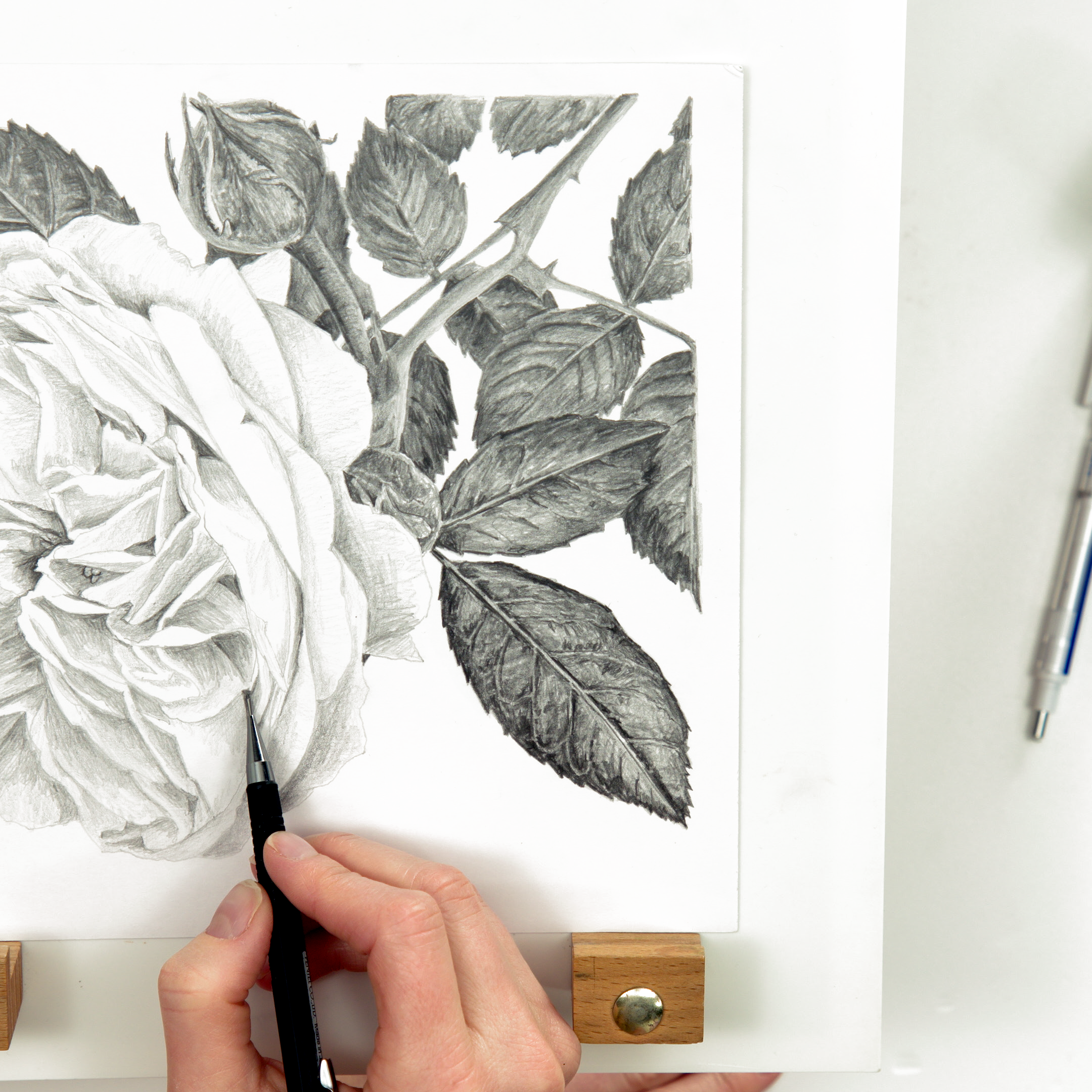
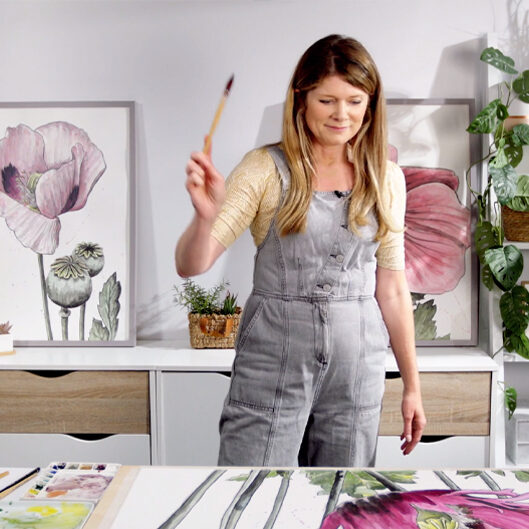
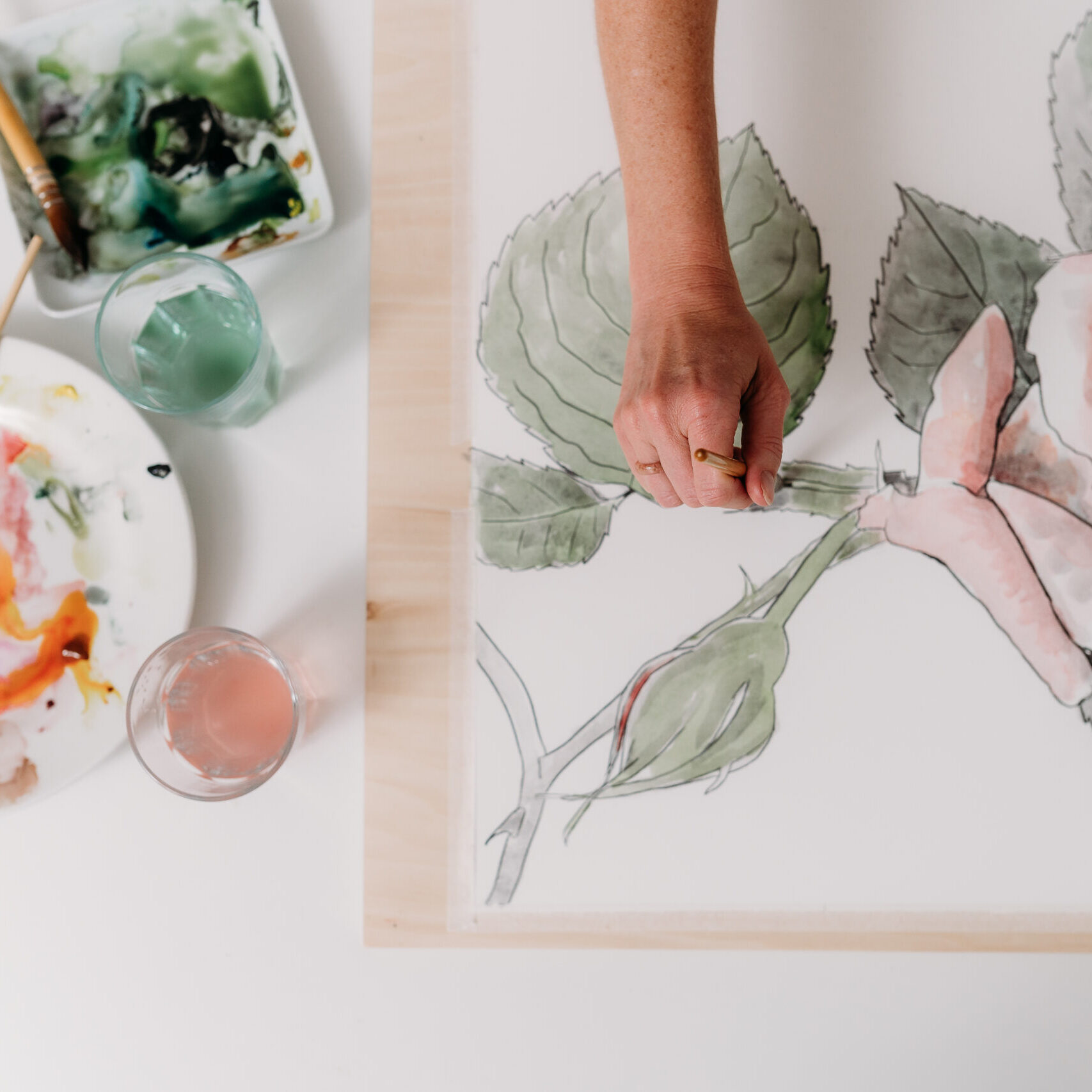
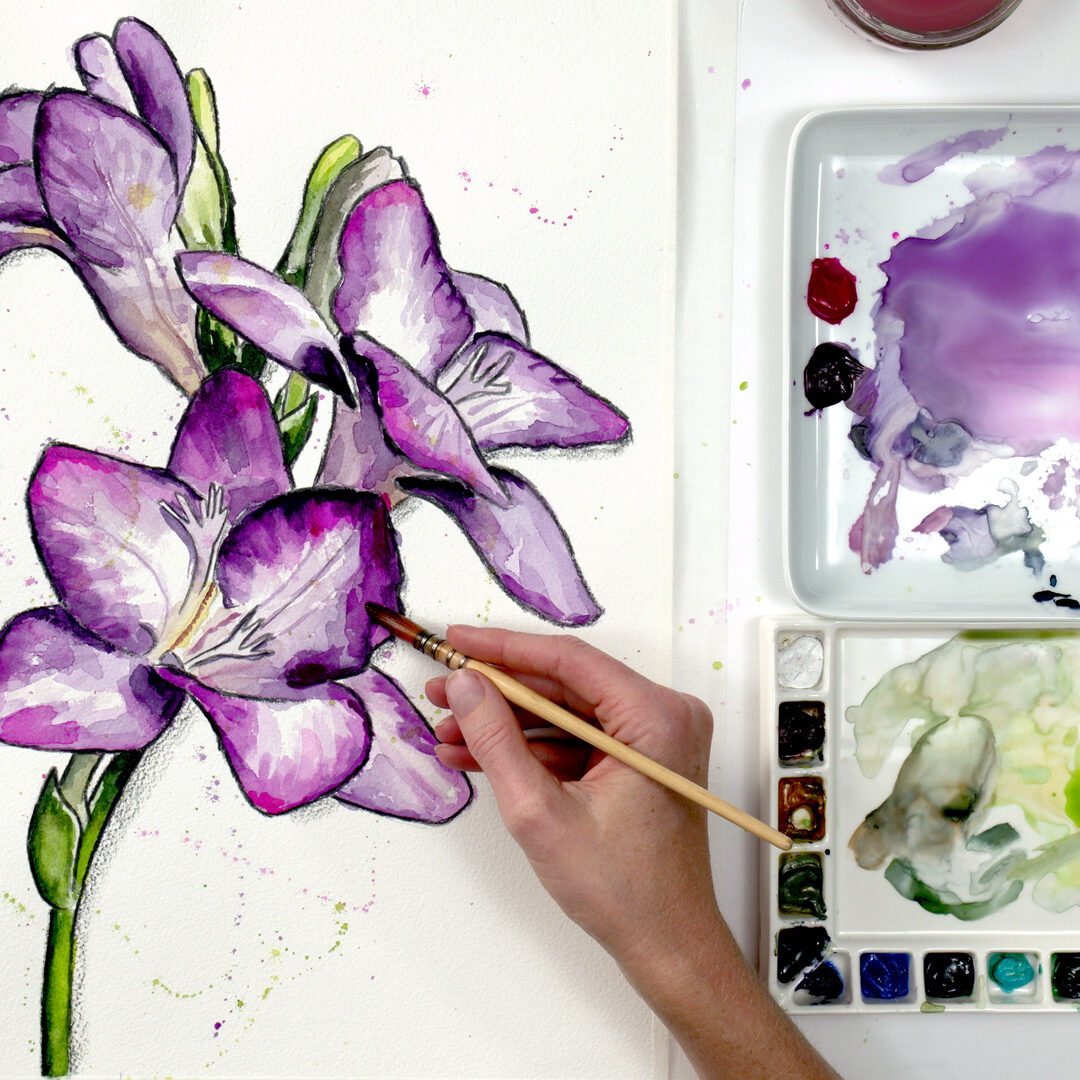
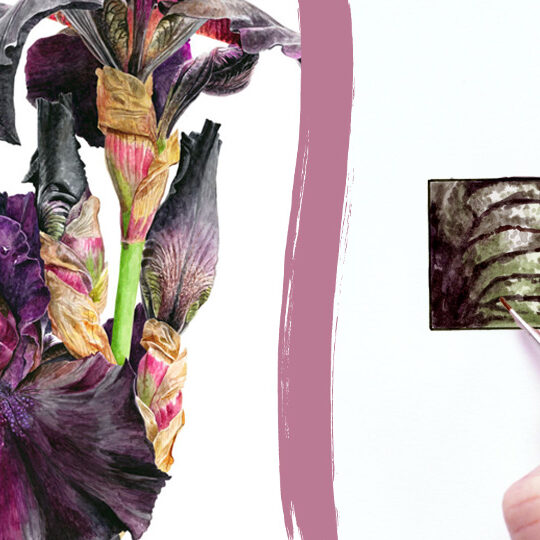
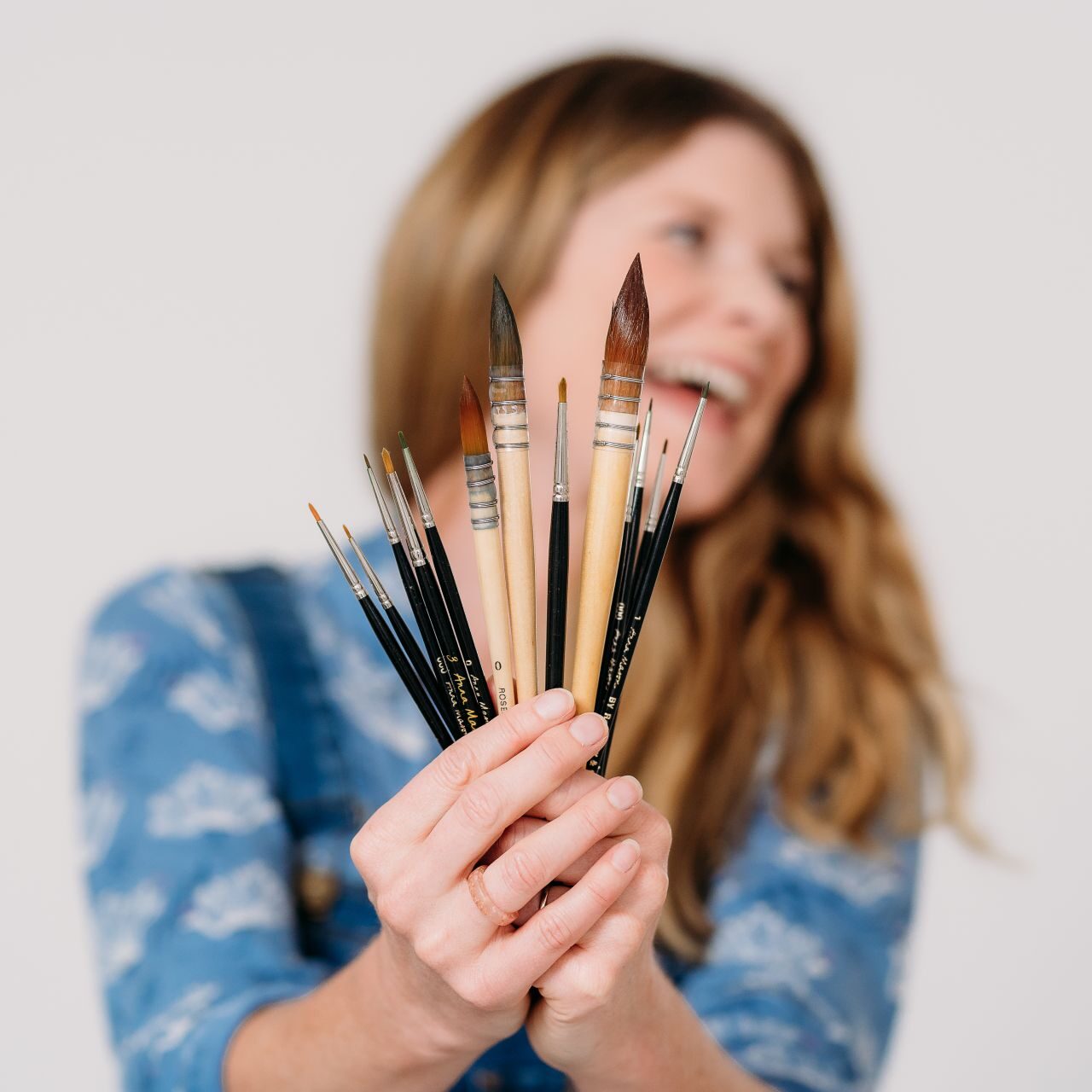
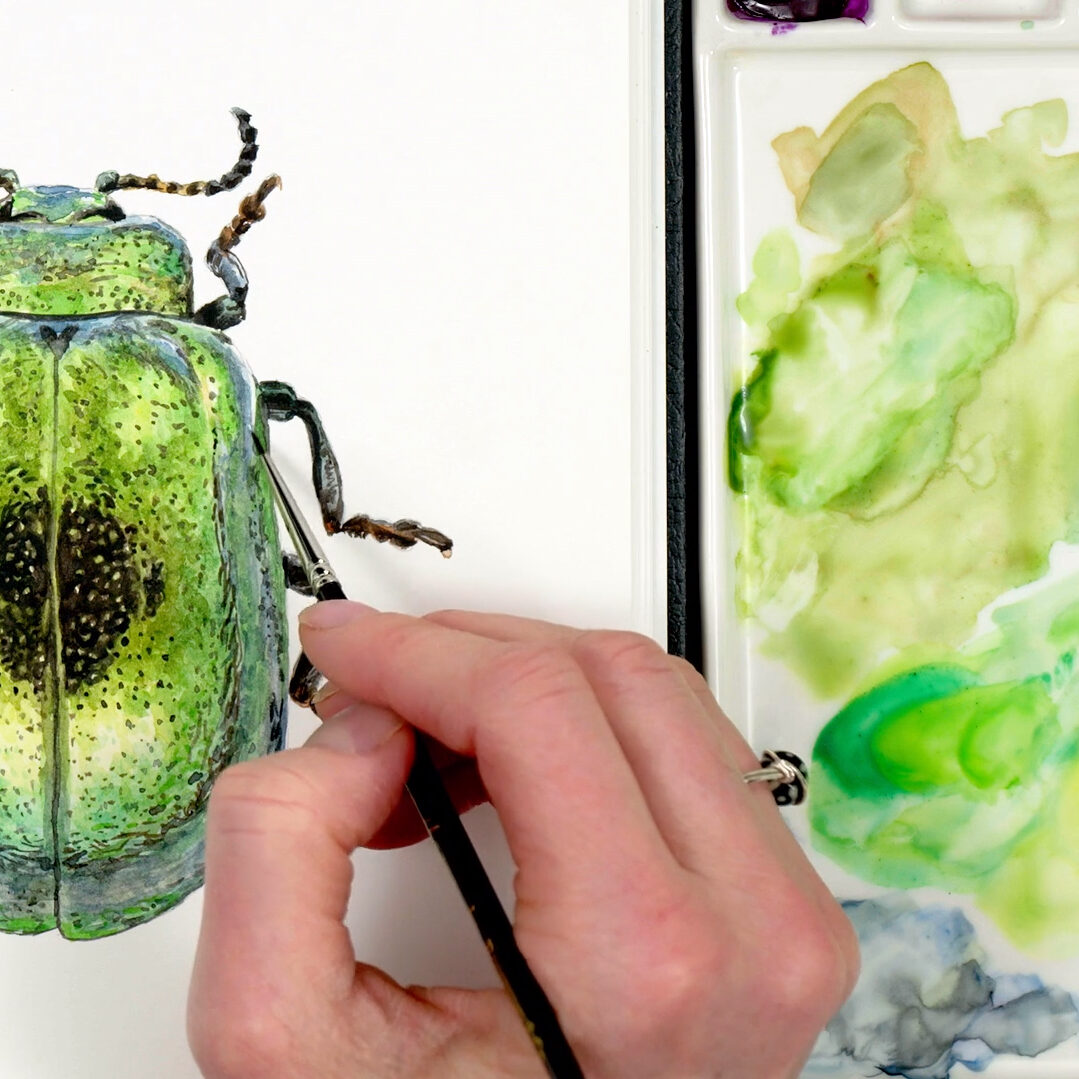
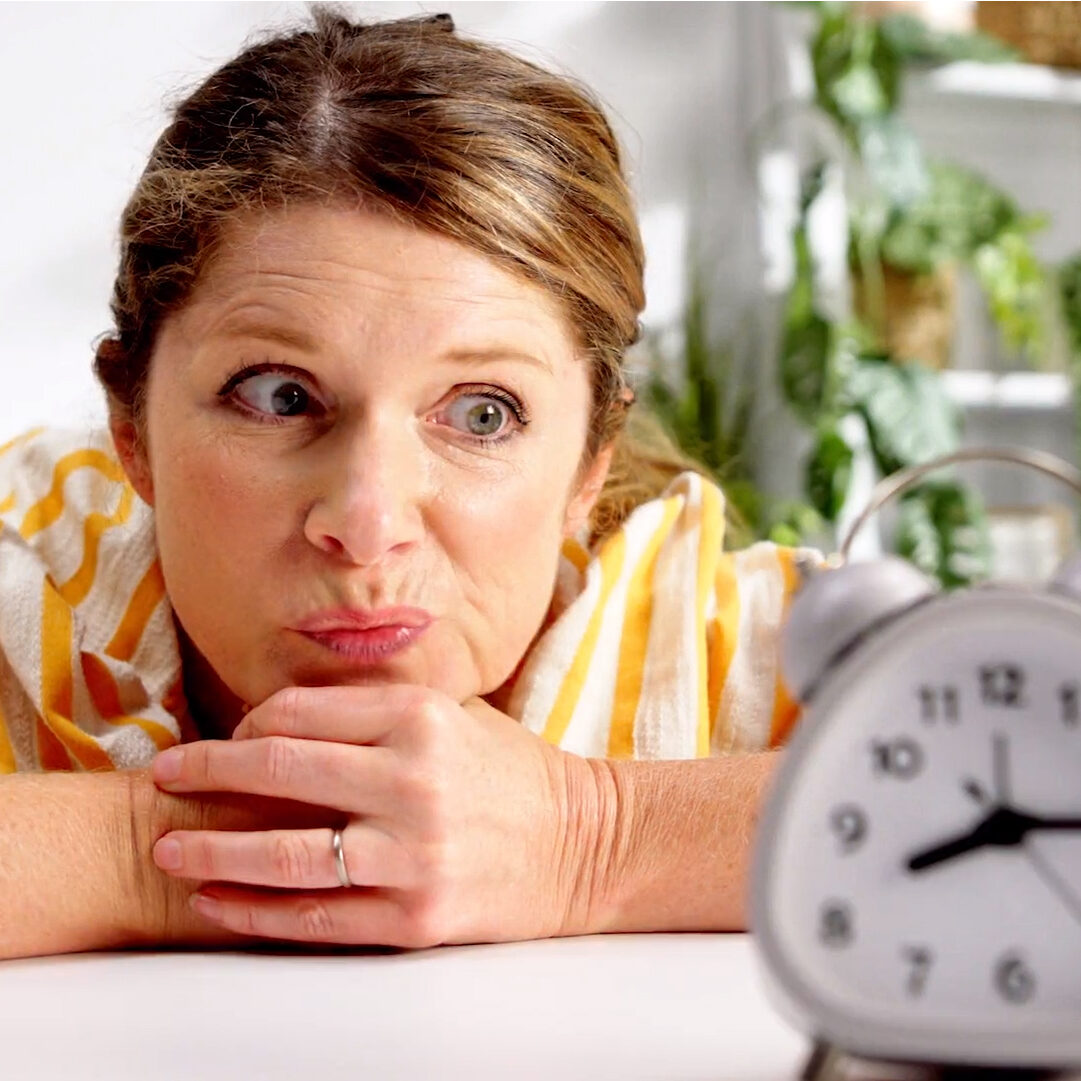
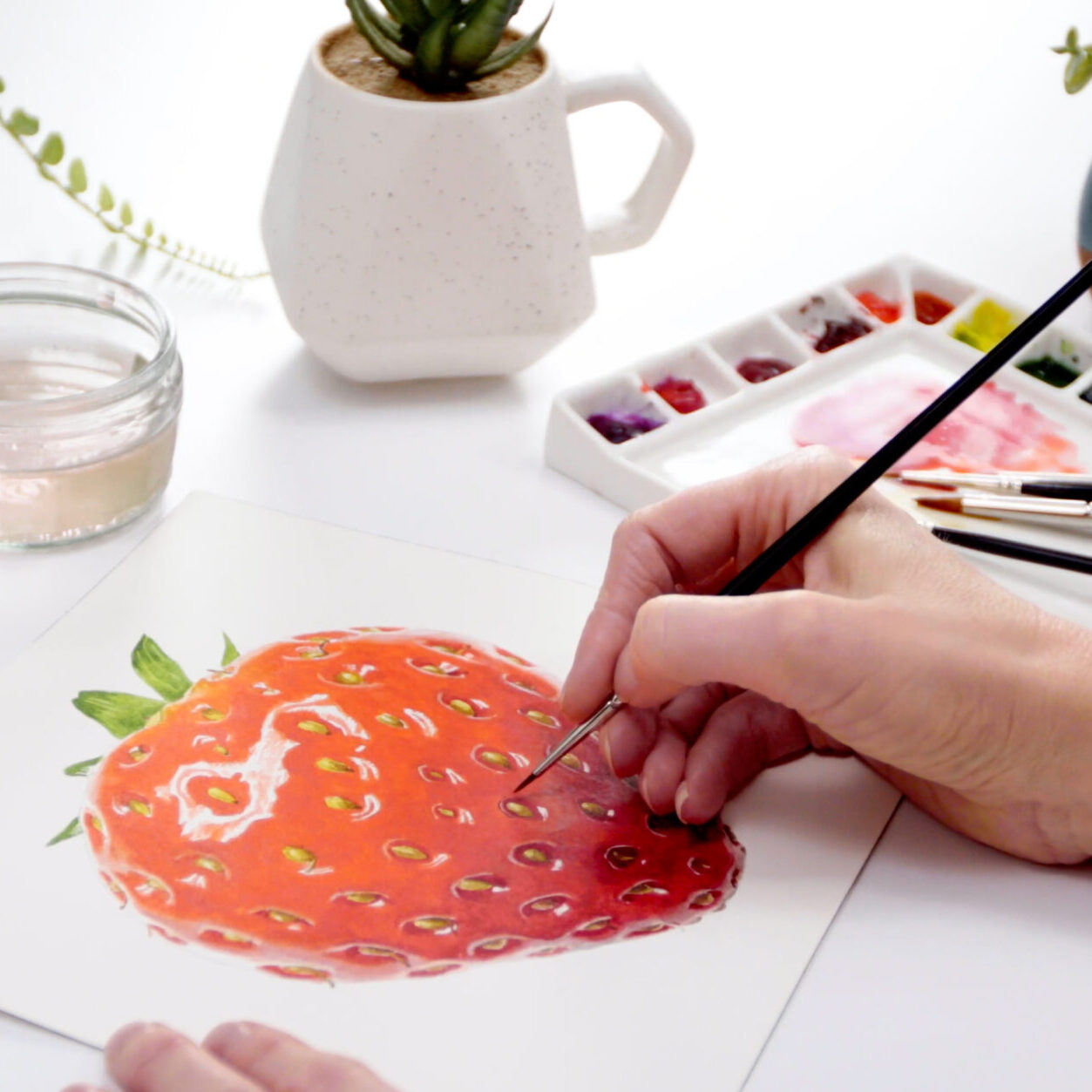
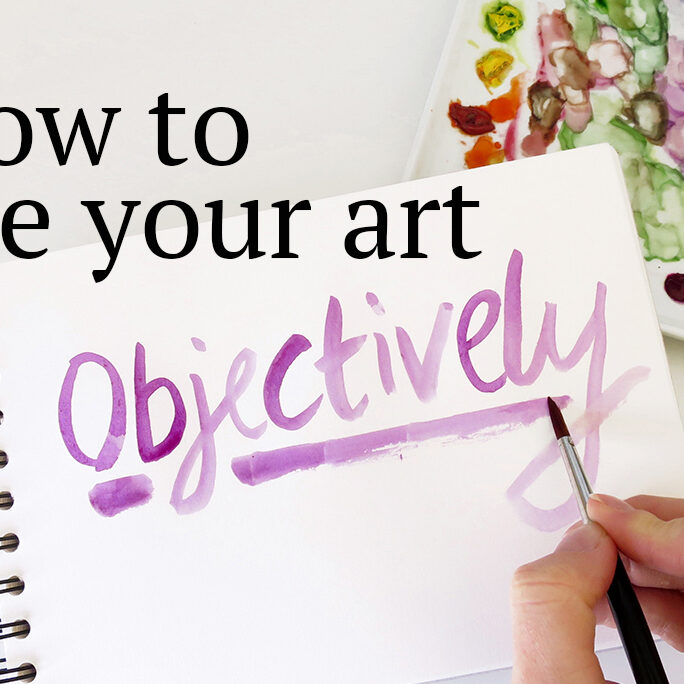
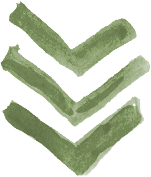
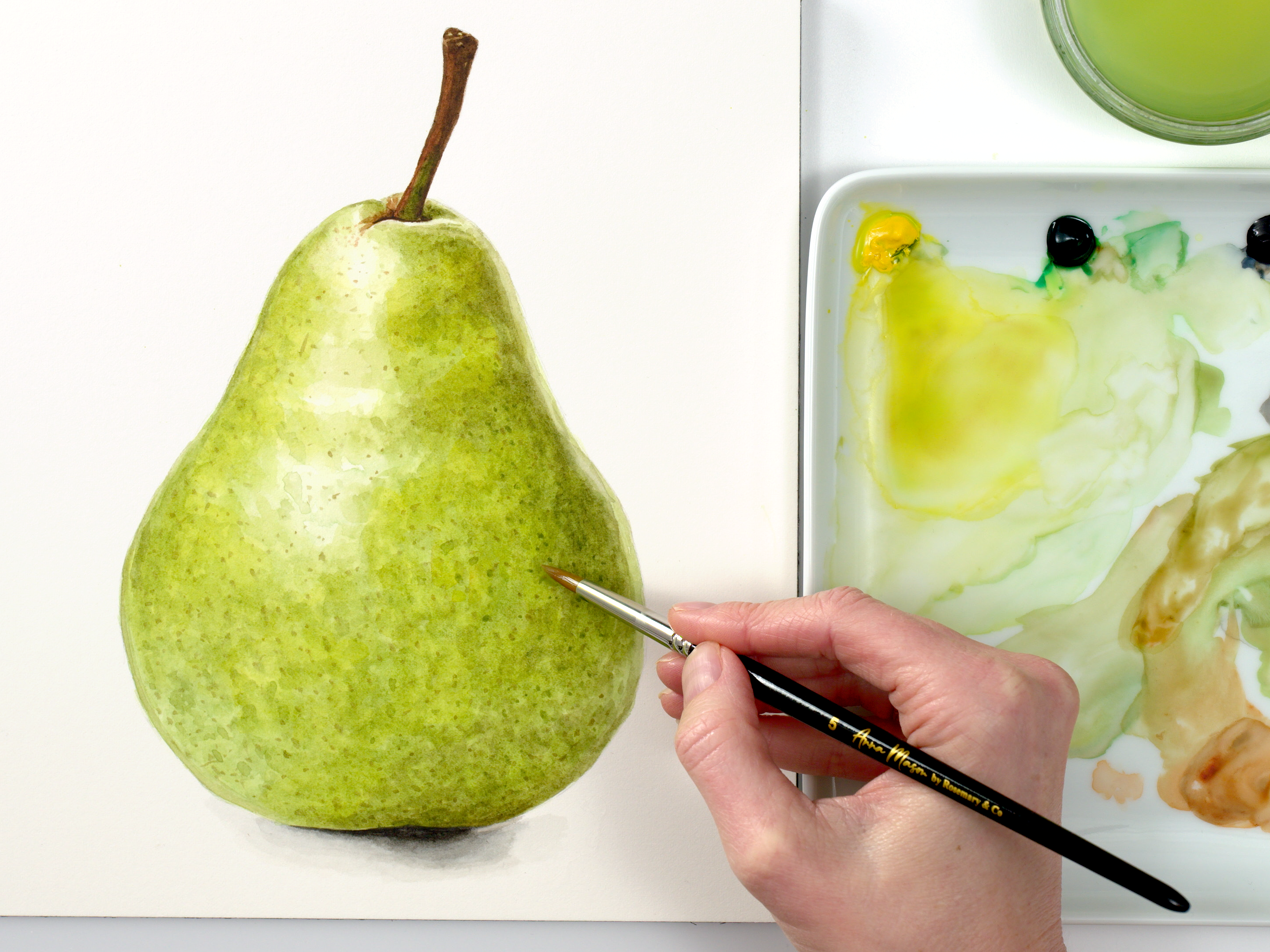

THANKS.
What a lovely video, thank you for sharing this. I am doing the Poppy flower and an trying to trust the process – that is the hardest for me. So thank you for this video – I am going to finish that Poppy soon!
Hi Anna
Thank you I have reached a stage where I feel everything I try to paint is rubbish and yet I have mounted and given away paintings so I must have done something right. I would love to try your nature classes. I am always looking for courses then I don’t buy any in case I won’t have time to do them. Trying a sample first might just be the way to go for me.
Love Bonni
thanks Anna, I’m really enjoying doing your 4 tutorials. I have finished the Lily and the pear is almost done too.
Thanks Anna. I have completed the calla lily drawing, which I really enjoyed, also I have completed the pear and framed it, it is now in my kitchen and am just about to embark on your poppy. I was going to draw it free hand but as you recommended tracing it I shall do that and get to the painting part in double quick time! I also enjoyed drawing your conker last week.
Very helpful. Thank you. Looking forward to hearing from you next week.
Thank you. I have been short on time lately.
Hello Anna
I am really enjoying your watercolour class. I have nearly finished the poppy and I am happy with it so far. Next I’ll be doing the pear. Thank you for sharing your skills! Happy painting!????
Dear Anna,
I’m enjoying the tutorials and just have the pear left to do. I love your palette of colors and find your technique very very helpful!
Claudia
So I have tried the 4 free classes and I am hooked
Thanks for your video, I like your exercises.
This blog post offers a concise yet informative guide to common watercolor painting mistakes, providing practical solutions for each. The advice on issues like overworking the paper and not planning the painting beforehand is particularly helpful, as these are pitfalls that many artists can easily fall into. By offering clear and actionable tips, this post empowers artists to improve their watercolor painting skills and avoid these common errors, ultimately helping them create more successful and satisfying artworks. Great going!